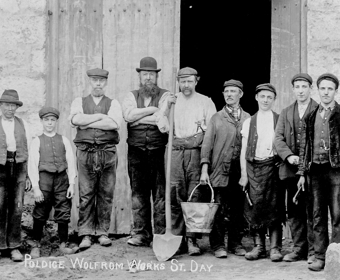A8 Luxulyan Valley with Charlestown
Nans Logsulyan ha Porthmeur West
The creations of two extraordinary industrialists
From tranquil green woods to a bustling harbour village, the landscapes of Luxulyan Valley and Charlestown are very different. However, they share important similarities: both are stunningly beautiful places with fantastic walks and rich mining histories to explore, and both were created by two locally-prominent industrial entrepreneurs.
Charlestown, whose picturesque harbour has featured in many films, was developed in the late 18th century by Charles Rashleigh, while the many works in the Luxulyan Valley, including the Treffry Viaduct, leats and tramways, were constructed by Joseph Thomas Austen, later Treffry, during the early to mid 1800s.
Charlestown was built between 1792 and 1801, and is the best-preserved china clay and copper ore port of this period anywhere in the world.
Works in and around the Luxulyan Valley include a three mile leat, constructed to power the many water wheels and water pressure engines at Fowey Consols Mine, and to supply water for the steam engines and ore processing; a canal to take the mine’s copper ore to the purpose-built harbour at Par; and a horsedrawn tramway, to provide a link to the mines of the hinterland and give access to the granite quarries at nearby Colcerrow. The most impressive feature within the Valley is undoubtedly the Treffry Viaduct, an imposing granite structure which carries both a leat and tramway route high above the Valley floor.
Charlestown was built between 1792 and 1801 and is the best-preserved china clay and copper ore port of this period anywhere in the world.


Treffry Viaduct

The Friends of Luxulyan Valley

Wheal Martyn Clay Works
The Audio Trail guides below explore Charlestown and introduce many of its notable features.
Information sheets are also available to accompany the Audio Trail guides and please see the links to these below.
Charlestown Audio Trail Delve Deeper
Charlestown Audio Trail Information Sheet
Sorry - there are no Audio Trail guides available for the Luxulyan Valley at this time.

